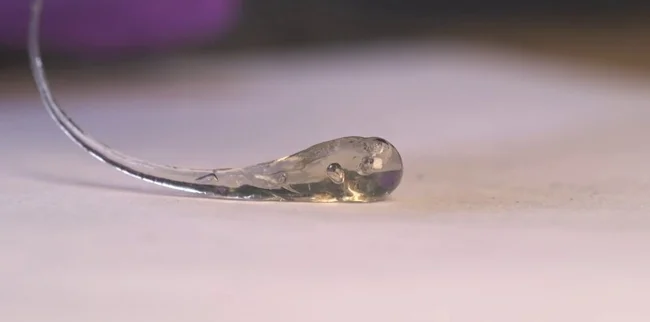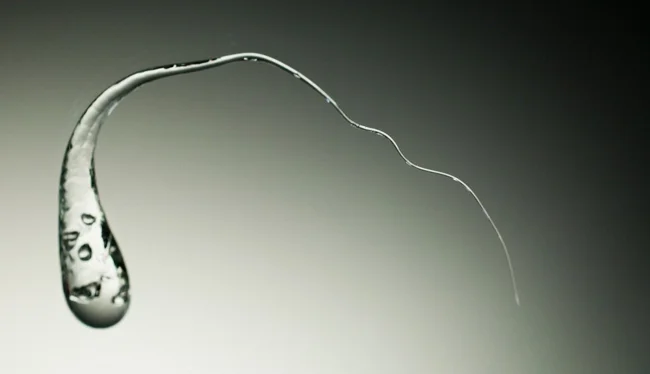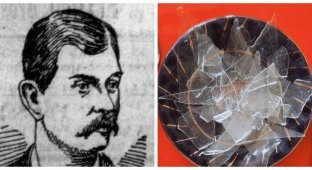Prince Rupert's tears: the secret of bulletproof glass that's afraid of a snap (7 photos + 2 videos)
This is one of the most mysterious glass creations—Prince Rupert's Drop. This amazing artifact is also known as Batavian Tears or Bolognese Flasks. 
It combines the seemingly incompatible: incredible strength and fragility at the same time. 
The droplet resembles a tadpole: a thick head and a long, thin tail. The head is so strong that it can withstand a hammer blow and even a bullet fired at point-blank range. The bullet shatters into tiny pieces upon impact with the glass. But just lightly nip the tail with your finger, and the entire droplet, including its super-strong head, instantly explodes, turning into a cloud of fine glass dust. 
The secret to these amazing properties lies in a special manufacturing method. Molten glass is dropped into cold water, causing its outer layer to instantly harden while the inner layer remains liquid. Upon further cooling, the outer layer contracts and the inner layer expands. The resulting tension creates incredible strength, yet a fragile balance. It's reminiscent of a stone arch, where the entire structure is held together by tension, but remove the keystone, and the arch collapses. 
Rupert of the Palatinate – an aristocrat and military leader, also known as a talented engineer, inventor, and engraver.
The history of the drops begins in Germany in the 1640s, where they were created by glassblowers in Mecklenburg and sold throughout Europe under the names Prussian or Dutch tears. The secret of their production was carefully guarded, giving rise to many theories. After weeks of experiments, the English scientist Margaret Cavendish, Duchess of Newcastle, hypothesized that the head contained a volatile substance that exploded upon contact with air. 
In 1660, Prince Rupert of the Palatinate, one of the founders of the Royal Society of London, presented these drops to scientists and King Charles II, giving them his name. Robert Hooke, who led the experiments, was the first to put forward the key idea that the properties of the drops were due to differences in the cooling rate of the glass, although a full understanding of this phenomenon did not come to scientists until three centuries later. 
It wasn't until 1994 that researchers from Purdue and Cambridge Universities, using high-speed photography, discovered that the droplet's surface experiences powerful compressive forces, while its interior experiences tensile forces. Experiments showed that the head can withstand pressures of up to 700 megapascals. Scientists recorded cracks propagating through the droplet at an incredible speed—over 6,500 km/h. 
Several years ago, researchers discovered that the outer compression layer is only 10% of the head's diameter, yet it possesses incredible strength. Cracks on the surface cannot penetrate, but damage to the tail directs them directly to the stress zone, releasing the stored energy.
This principle forms the basis for the production of tempered glass for cars and smartphones. This glass shatters into small, safe fragments, and car windows are additionally protected by a special layer that retains the particles.

























